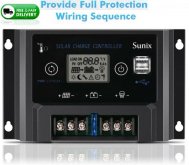Adamlukegilbert
New Member
- Joined
- Apr 4, 2021
- Messages
- 4
I am connecting a new 12v leisure battery to a new Sunix solar controller. The controller flashes a warning and displays 12.6v, so it seems to be too high. How would I reduce the voltage?
Previously I used a Buck converter to step the voltage down from an 18v drill battery, but the solar would not charge this setup.
Total beginner, any help would be great.
Previously I used a Buck converter to step the voltage down from an 18v drill battery, but the solar would not charge this setup.
Total beginner, any help would be great.



